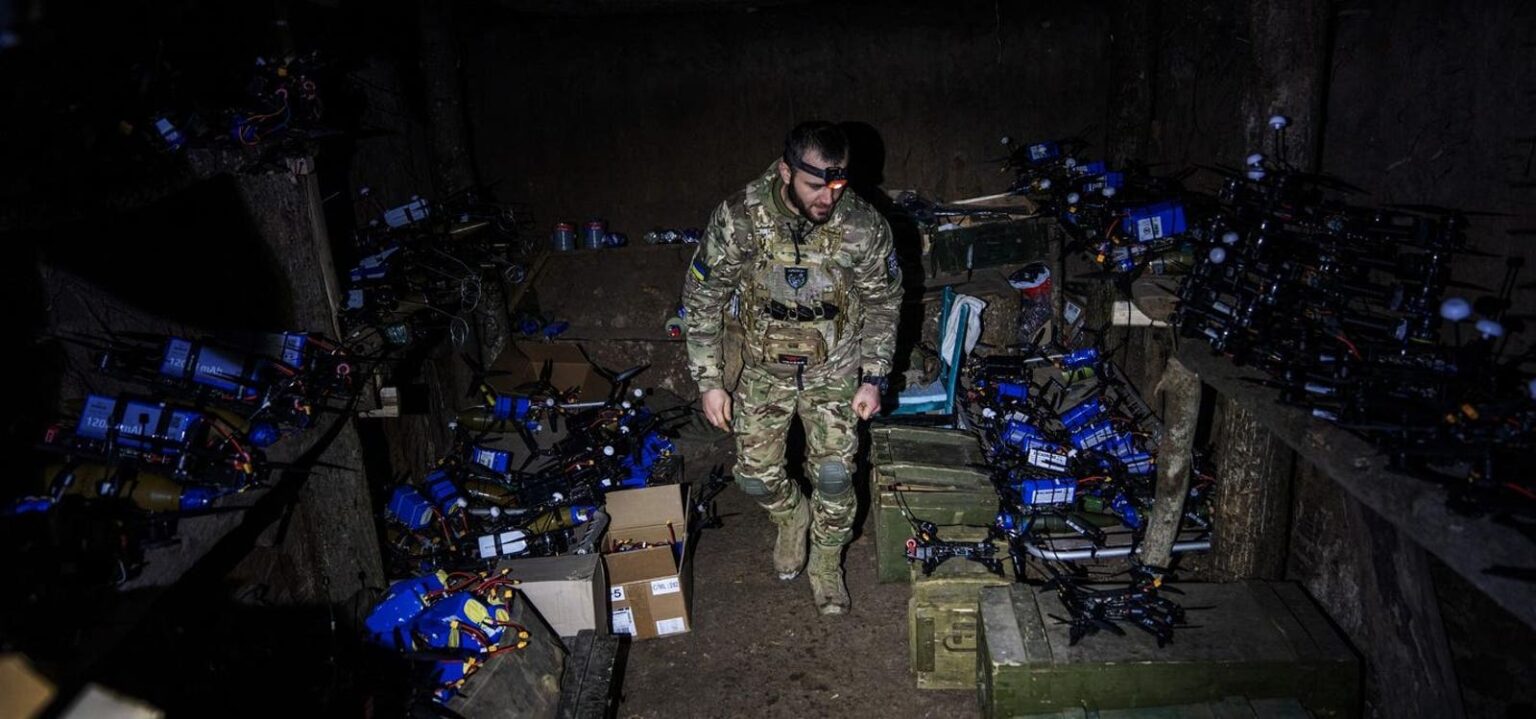KHARKIV OBLAST, UKRAINE – JANUARY 16: A shelter where Ukrainian soldiers prepare FPV attack drones … [+]
Anadolu via Getty ImagesA 2020 Forbes article forecasted that drones would become the natural replacement of Improvised Explosive Devices (IEDs), the roadside bombs commonly used by insurgent groups throughout the Global War on Terror. It noted that the rapid expansion of the commercial drone market, combined with their affordability, has provided a new method for both regular and irregular military forces to deliver explosive payloads to disrupt an adversary’s operations. The Russia-Ukraine War has significantly accelerated drone technology, particularly for military applications, with both sides pushing drones beyond their traditional surveillance roles. In line with that article’s predictions, a recent video posted to social media suggests that Ukraine has begun using drones as roadside bombs, effectively replicating the role of IEDs.
The video consists of a compilation of camera feeds from different Ukrainian first-person view (FPV) drones as they strike Russian targets in the Kursk region. The video is attributed to the 8th Special Forces Regiment. Two clips in the video display the camera feed from an FPV drone positioned on the ground beside a road, partially concealed in the grass. The drones are angled to maintain a clear view of the road. In the first clip, a Russian UAZ-452, a common troop and supply transport vehicle, drives by. In the second, a Russian Ural-4320 supply truck passes the drone. In both cases, the drone lifts off, pursues the vehicle, and crashes into it, detonating its explosive payload. Though the camera feed cuts off at that point, it is presumed that the vehicle is destroyed.
Social media capture attributed as the camera feed from a Ukrainian FPV drone operated by the 8th … [+]
Social Media CaptureThis approach replicates the effects of IEDs while overcoming several of their limitations. Notably, a drone can position itself without requiring a soldier to physically emplace it, making it particularly effective against softer targets such as supply vehicles operating deep behind enemy lines. Instead of risking a soldier infiltrating the area to plant an IED, the drone can be flown to the ambush site and positioned along a supply route. Additionally, unlike traditional IEDs, drones do not require a nearby soldier for overwatch. The operator can remain in a secure location, monitoring the situation through the drone’s camera feed. Moreover, IEDs typically rely on large munitions to penetrate a vehicle’s armored undercarriage. In contrast, drones enable precision strikes against less armored sections, allowing for the use of smaller, more efficient munitions.
This approach also offers several advantages over traditional drone attacks, where the drone flies over an area, searches for a target, and then strikes. Conventional attacks are often limited by battery capacity, as the drone constantly expends energy to stay airborne. In contrast, this method requires some energy to reach the ambush position. Once the drone lands, its energy consumption is minimal, limited to transmitting the camera feed. This allows the drone to remain in position for an extended period, needing only a small reserve of energy for the final attack.
Additionally, while these drones are on the ground, they are difficult to detect. Airborne drones produce an audible whine from their motors and are visible against the sky, making them vulnerable to detection and interception. In contrast, a stationary drone has no acoustic signature and is much harder to spot, particularly by a moving vehicle. This is especially true when it is positioned in a cluttered environment or concealed in tall grass.
Social media capture attributed as the camera feed from a Ukrainian FPV drone operated by the 8th … [+]
Social Media CaptureDespite these advantages, this approach is highly vulnerable to electronic warfare, a technical area where the Russians have significant expertise. The drone must transmit its camera feed to the operator and rely on a command signal to take off and strike the target. This outgoing camera feed can be detected by electronic warfare equipment, alerting Russian forces to the drone’s presence. Once identified, the incoming command signal can be jammed, potentially preventing the drone from carrying out its attack.
The Russians will likely adopt such countermeasures for their vehicles as the Ukrainians increasingly use drones to function as IEDs. Ukraine can overcome these electronic warfare systems by incorporating greater autonomy into their drones to reduce their reliance on operator control. By integrating computer vision and onboard processing, these drones could identify and classify military vehicles based on shape, heat signature, or movement patterns. Once a target is detected, the drone could autonomously take off, track the vehicle, and execute an attack without real-time human input. This shift toward greater autonomy would force Russian forces to develop new counter-drone strategies.
Drone technology has been a defining feature of the Russia-Ukraine War, with both sides continuously developing new tactics for its use on the battlefield. This latest approach effectively turns drones into roadside bombs, resembling the IEDs that proved effective during the Global War on Terror. It offers several advantages over both traditional IEDs and conventional drone attacks. However, as seen throughout the war, Russia will adapt countermeasures, ensuring that drone warfare continues to evolve.
Read the full article here


